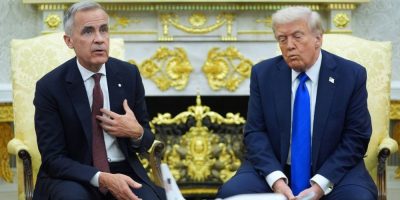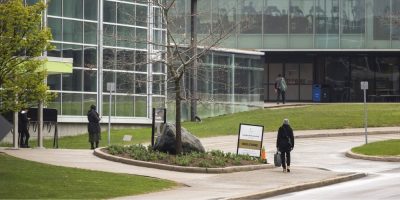
By Laura Osman in Ottawa
The massive convoy of demonstrators that rolled into Ottawa this past winter loudly heralded a new era in Canadian politics, with blaring horns and the rumble of hundreds of idling engines.
The weeks-long "Freedom Convoy" protests in Ottawa and the kindred demonstrations that appeared at provincial legislatures and international border crossings aimed to force governments to end COVID-19 public health restrictions and vaccine mandates.
The protest was by far the top choice for The Canadian Press news story of the year, as voted by editors in newsrooms across the country.
The protest began with two truck drivers who felt angry and frightened about a proposed vaccine mandate for cross-border truckers. They connected on TikTok and began gathering support for a cross-country convoy to Ottawa.
The cause quickly evolved to include growing discontent with COVID-19 vaccine mandates at large, other public-health restrictions and general animosity toward Prime Minister Justin Trudeau and his Liberal government.
It ended as a countrywide movement that attracted many people who suffered financial losses during the pandemic, but also more radical figures who threatened violence, displayed symbols of hatred and aimed to overthrow the elected government.
"It was so polarizing," S.R. Slobodian, an editor at the Globe and Mail in Toronto, wrote in the survey response.
Slobodian called the protest a "microcosm of all the tensions and frustrations of those who saw public good in certain pandemic measures and others who saw obstacles."
The protest laid bare the unrest associated with COVID-19 restrictions that had percolated since the 2021 federal election, when Trudeau announced he would institute a vaccine mandate for domestic and international travel and for government and Crown-agency employees.
"After two years living under a pandemic and its rules, Canadians were fed up," wrote Dawn Walton, the managing editor of CTV Calgary.
"The Freedom Convoy protests capitalized on that sentiment, drawing an unprecedented groundswell of support. But what was perhaps originally meant to send a message instead resulted in social and economic chaos."
It also exposed problems with Canada's police services and how different levels of government work together, wrote Carson Jerema, comment editor at the National Post.
The protesters used big-rig trucks to blockade streets around the parliamentary precinct and set up camps complete with barbecues and open fires. On Wellington Street, directly in front of Parliament Hill, the protest became a party that lasted three weeks, and the number of demonstrators and revellers would swell each weekend.
Images of people in an inflatable hot tub and bouncy castle were juxtaposed against images of flags with expletives aimed at the prime minister.
Downtown Ottawa residents, meanwhile, told city councillors and journalists they felt their neighbourhoods had been taken hostage and had descended into lawlessness. The ceaseless sound of honking horns and loudspeakers and the smell of diesel fumes became a constant concern.
Similar protests travelled to the small town of Coutts, Alta., and Windsor, Ont., to block two of the most critical border crossings in the country. Together, they blocked hundreds of millions of dollars in trade per day.
After RCMP moved in to make arrests in Coutts and found a cache of weapons, the protest disbanded. Meanwhile, police moved in to remove protesters from the Ambassador Bridge in Windsor.
David Hughes, CTV's general manager for digital and W5, described the protest as a "fundamental change" in the way political protest is carried out in Canada and "a message to politicians of all stripes that some Canadians are now ready to embrace and encourage economic pain on their fellow citizens and the threat of potential violence to force political change."
The economic and social impact of the protesters were so great, Trudeau invoked the Emergencies Act on Feb. 14 for the first time since it replaced the War Measures Act in 1988.
The move granted extraordinary powers to police and governments to limit the protesters’ right to assembly and freeze their bank accounts in the hopes of clearing the demonstrations and preventing protesters from returning.
Less than a week later, police from across the country launched a massive operation to dislodge the protest from the streets of Ottawa, ending in hundreds of arrests.
Forty-one per cent of 104 survey respondents chose the "Freedom Convoy" as story of the year. Strain on the public health-care system was the second choice at 20 per cent.
Now that health restrictions have ended across the country, Canadians are settling into a new phase of the pandemic. But though the trucks are gone from Ottawa’s parliamentary precinct, the cracks in national unity remain.
"The movement will have lasting reverberations," wrote Rob Roberts, editor-in-chief of the National Post.
This report by The Canadian Press was first published Dec. 19, 2022.
Banner image via The Canadian Press






